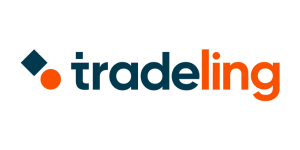Shopify vs Amazon UAE: When Should UAE Sellers Launch Their D2C Store?
For e-commerce sellers in the UAE, choosing between Shopify vs Amazon UAE isn’t just a matter of platform preference—it’s a strategic decision that impacts profitability, brand autonomy, and long-term growth. Both Amazon.ae and Shopify offer distinct advantages, but as your marketplace sales mature, the question becomes: When is the right time to diversify into your own direct-to-consumer (D2C) Shopify store?
At Brick2Bytes, we’ve guided dozens of UAE sellers through this evolution. In this article, we’ll walk you through a data-driven framework to determine if—and when—you’re ready to take the leap into D2C while continuing to grow on established marketplaces like Amazon and Noon.

The Business Challenge: Operating Within vs. Outside of Marketplace Walls
While marketplaces like Amazon.ae and Noon account for over 65% of the e-commerce traffic in the UAE, they come with trade-offs. Commission fees often range between 25% to 30% of each sale, cutting deep into profit margins. Sellers are also at the mercy of platform algorithms, policies, and fee adjustments. More critically, selling through marketplaces limits direct communication with customers, hindering opportunities for loyalty-building and lifetime value expansion.
That’s where the Shopify D2C model enters the equation. Designed to give sellers full control over their brand, pricing, and customer data, Shopify allows UAE-based brands to build repeatable, profitable growth—on their terms.
However, success with D2C isn’t automatic. Without marketplace traffic, website visibility and conversion require upfront investment in marketing, UX, and fulfillment infrastructure. It’s vital to assess whether your business is ready to make that move—and that’s where our proprietary DRLA Framework comes into play.
Introducing the DRLA Framework: A 4-Step Transition Strategy
Our D2C Readiness & Launch Accelerator (DRLA) is a proven four-step system we use to guide established marketplace sellers through their D2C journey with minimal disruption and maximum ROI.
Step 1: Feasibility & Timing Assessment
Begin by evaluating key performance indicators across your marketplace performance:
- Are you generating consistent revenue of AED 50K/month or more?
- Do your products have healthy repeat purchase potential?
- Is your average order value supporting enough margin to absorb new customer acquisition costs?
Sellers who can confidently answer “yes” to these questions are strong candidates to supplement their marketplace presence with a Shopify store.

Step 2: Infrastructure & Brand Foundation
This stage is about building a trustworthy and conversion-optimized Shopify store that caters specifically to UAE shoppers. Key infrastructure elements include:
- Payment Gateway Integration: Seamless checkout using Arabic-friendly gateways like Tabby, Tamara, and Telr.
- Fulfillment Network: Fast, reliable last-mile delivery through partners such as Quiqup or Shipa.
- Localized User Experience: Mobile-first, Arabic-English bilingual interface that aligns with local shopper expectations.
Don’t underestimate the importance of a strong first impression. Your D2C store should clearly differentiate from marketplace listings with unique bundles or first-time buyer incentives will shape how you build your storefront experience.
Step 3: Traffic Diversification Plan
Launching a Shopify store doesn’t guarantee traffic—you must build it. Start by tapping into customers you’ve already converted on marketplaces. Consider these initiatives:
- SMS/Email Campaigns: Engage existing buyers via loyalty program launches or exclusive Instagram drops.
- Personalized Retargeting: Use Facebook Pixel and Google Ads to retarget known buyers with compelling offers.
- Influencer Collaborations: Build early Shopify buzz through culturally aligned creators within the UAE social ecosystem.
Your initial Shopify traffic shouldn’t be cold—it should come from audiences already warmed through marketplace exposure. Leverage proven marketplace performance to inform your D2C media strategy. Like “See-Think-Do-Care” can guide your execution.

Step 4: Retention & Optimization Loop
One of the most valuable advantages of the D2C model is retention. While marketplaces relentlessly focus on acquisition, your brand-owned channel is where you build ongoing loyalty.
Turn first-time buyers into lifetime customers with:
- Loyalty Programs: Use Shopify apps like Smile.io to gamify repeat shopping through rewards and referrals.
- Subscription Models: Ideal for high-consumption products (e.g. cosmetics, wellness), subscriptions provide predictable revenue and increase customer lifetime value (LTV).
- Post-Purchase Feedback: Use surveys and A/B testing for checkouts and product flows to drive constant improvement.
Optimization is not a one-time event. D2C brands must adopt a “data first” culture that draws insight from every purchase to improve the next. That’s the mindset defining e-commerce success in the competitive UAE digital economy.
Common Pitfalls to Avoid
We’ve helped dozens of brands side-step costly D2C missteps. Here are three frequent ones to watch for:
1. Premature Shopify Launch Without Critical Mass
Without steady revenue and validated product-market fit on Amazon or Noon, your Shopify store will struggle to gain meaningful traction. Build proof with consistent marketplace results first.
2. Identical Pricing and Offers Across Channels
Offering the same price and promotions on your D2C site as you do on Amazon can lead to trust issues—or worse, policy violations. Create Shopify-exclusive bundles or early access offers to differentiate intelligently.
3. Underestimating Paid Media Requirements
Unlike marketplaces, Shopify doesn’t come with built-in traffic. Invest in media budgets tailored to your KPIs—and track every conversion rigorously.
KPIs That Matter in D2C Transition
There are specific metrics every UAE seller should monitor once the D2C store goes live:
- Customer Acquisition Cost (CAC): Measure how efficiently your paid initiatives are generating Shopify customers.
- Repeat Purchase Rate (RPR): Over time, aim for 25%+ repeat purchasers in retention-oriented verticals like beauty and health.
- Gross Margin per Order (GMPO): With no commissions slicing off your margins, D2C should yield 10–20% higher profits per order once your infrastructure is optimized.
By monitoring these KPIs, sellers gain a clear view of when D2C operations begin to outperform marketplace-only strategies in net contribution.
An example digital marketing dashboard, from Klipfolio.
Is Shopify vs Amazon UAE a Binary Choice?
No. This isn’t a question of one replacing the other. Savvy sellers use a multi-channel strategy to scale. Marketplaces like Amazon provide wide reach, early validation, and volume. Shopify powers brand control, customer relationships, and long-term LTV growth. The right formula blends both.
Conclusion
The debate around Shopify vs Amazon UAE isn’t about replacing one with the other. It’s about timing, strategic readiness, and long-term vision. If your brand has achieved solid marketplace traction and you’re looking to reclaim margin, control, and data, transitioning into a Shopify-led D2C model is the logical next step.
Approach your D2C journey proactively—not reactively—and you’ll unlock growth that marketplaces alone simply can’t deliver. At Brick2Bytes, we’re here to reduce the guesswork, optimise the transition, and help you grow faster. Speak to our experts and get a Free Consultation.









